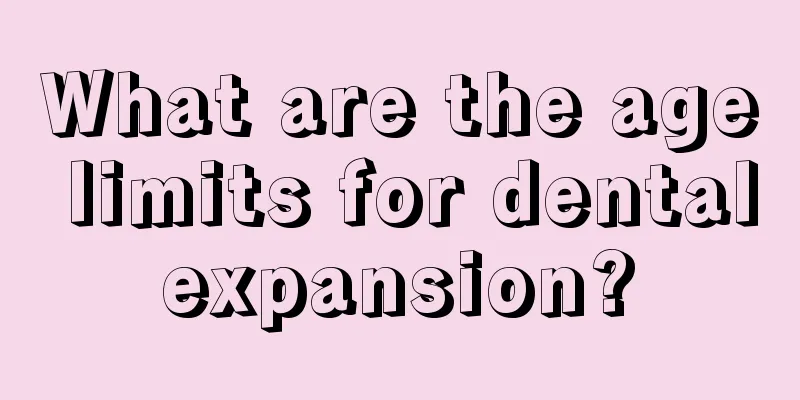What are the age limits for dental expansion?

|
A dental expander is a device used to straighten teeth. As we all know, the younger the age, the better the effect of orthodontic surgery. If you wait until adulthood to undergo orthodontic surgery, the teeth have already begun to take shape, so the effect will not be as good, and of course the correction time will be much longer. So, what are the age restrictions for dental expansion? The following will give you a detailed introduction! Age restriction Adults have more limitations when it comes to receiving comprehensive orthodontic treatment than children. If the problem of tooth bite is caused by the underdevelopment of the upper and lower jaws, since the face and bones of an adult have basically been formed, it must be cured through orthodontic treatment. Only by combining orthodontics and maxillofacial surgery can deviations in jaw development in adults be corrected. Functional braces, which are used to correct abnormal jaw bone development in children, are generally not successful in adults. Best time The best time for orthodontic treatment varies according to different age groups: 1. Primary teeth period (3 to 5 years old). The main purpose of correction is to promote the normal development of children's maxillofacial region. During this period, the main targets are malocclusions such as deciduous teeth crossbite (i.e. overbite), mandibular protrusion, posterior teeth crossbite, etc. that hinder the normal development of the maxillofacial region. It also promptly corrects bad habits that affect the normal function of the oral cavity, such as tongue sticking out and lip biting, to prevent further occurrence of malocclusion. 2. Tooth replacement period (girls: 8-10 years old, boys: 9-12 years old). Generally, there is no need to correct the local malocclusion that occurs during this period. However, for bad habits such as lip biting, tongue sticking out, and mandibular protrusion, or abnormal facial shape, anterior crossbite, functional mandibular retrusion, and abnormal relationship between the upper and lower jaws, it is often necessary to go to the hospital to see an orthodontic specialist for examination in time to determine whether it is a dental, functional, or skeletal malocclusion in order to clarify the treatment plan. 3. Permanent teeth period (girls: 11-14 years old, boys: 13-15 years old). Permanent dentition begins to form around the age of 12. Once malocclusion occurs at this time, it will not disappear automatically and can only be corrected through treatment by an orthodontic specialist. This period is the best time to correct malocclusion in children, with the best effect. All types of malocclusion can be corrected with orthodontic treatment. Treatment duration The course of orthodontic treatment is generally about two years, but the time required for treatment may vary depending on factors such as the age, severity, and response of the teeth to treatment of each patient. As long as you can cooperate well with the orthodontist, go for follow-up visits on time, maintain oral hygiene and protect the braces from damage, the efficiency of orthodontic treatment can be greatly improved. |
<<: Causes, hazards and relief methods of loose teeth with gaps
>>: What's wrong with small pimples on the eye epithelium?
Recommend
Persimmon's effects and contraindications
In life, many people like to eat tree persimmons....
Postoperative biological therapy for esophageal cancer
Postoperative adjuvant biological therapy for eso...
Can rice water cure gray hair? This is what Chinese medicine says
Gray hair has always been a problem that troubles...
Methods and contents of subclavian vein puncture
Subclavian vein puncture is a common emergency me...
A complete guide to removing smoke odor
Some of us may be particularly disgusted with smo...
The optimal usage of 10 daily necessities
Daily maintenance is inseparable from various car...
What are the traditional Chinese medicine formulas for cervical spondylosis
The problem of cervical spondylosis affects and t...
How do patients with prostate cancer take care of themselves
At present, prostate disease is a common disease ...
How to use the scalp massage brush
I believe everyone has heard of scalp massage, bu...
What are the folk remedies for treating hernia?
Hernia is very common. The main reason is the dis...
How to fix sour noodles
In daily life, we often encounter such a situatio...
How long can you live with kidney cancer? These three factors determine it
How long a person with kidney cancer can live dep...
How to improve memory instantly and effectively
Improving memory is what many friends want to ach...
The harm of preservatives to humans
Preservatives are widely used in food. Most foods...
Which material is better for removable dentures
Teeth are very important to us, but many elderly ...









